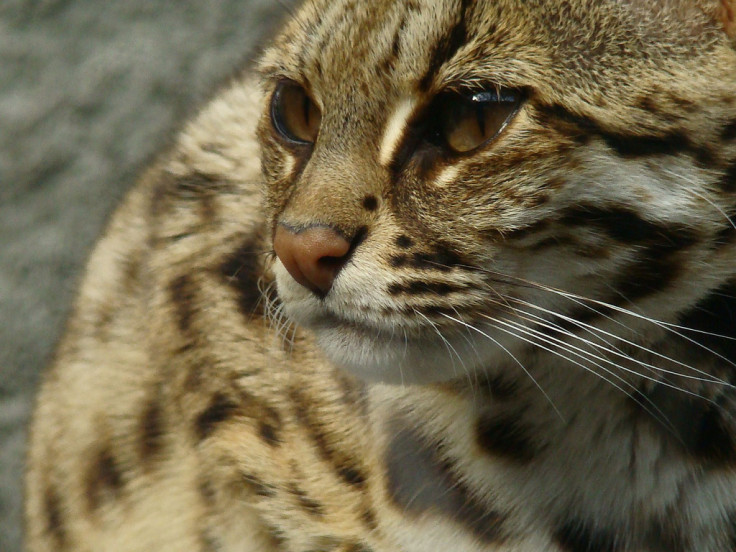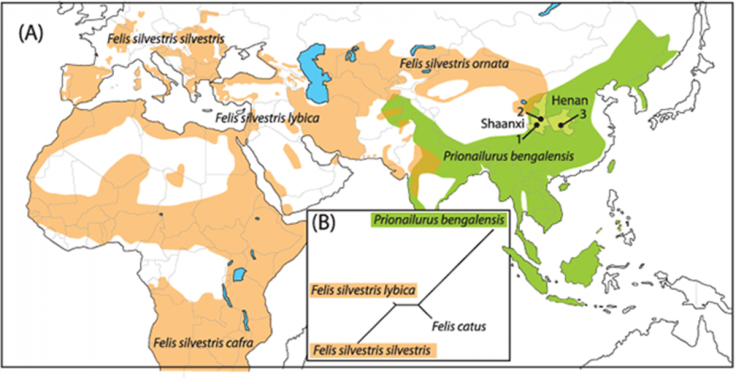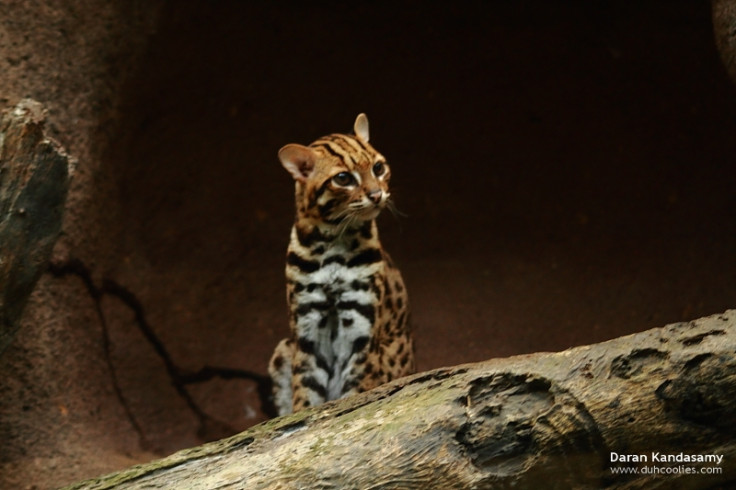Domestic cats in China arrived 5,500 years ago independently of neighbouring lands

Cats were domesticated in China around 5,500 years ago independently of their neighbours in the Near East and Egypt. Analysis of fossilised cat bones from early agricultural settlements in China show the species of the first domestic cats differed from those seen in other areas – showing they were not brought to China from nearby lands, where cats had been domesticated thousands of years earlier.
The story of cat domestication goes back around 10,000 years, coinciding with the birth of agriculture. As mice were attracted to the grain being harvested, the cats were attracted to the mice – a partnership that was beneficial to both humans and felines. The first close relationship between cats and humans was found in the Near East from between 9000 and 7000 BC.
Cat bones dating to 3500 BC were discovered in Shaanxi province in 2001. However, whether this was the result of felines being introduced from the Near East or if they had built the relationship independently was unknown.
Now an international team of scientists from CNRS, the French Natural History Museum (MNHN), the University of Aberdeen, the Chinese Academy of Social Science and the Shaanxi Provincial Institute of Archaeology have analysed the fossils to discover which species of cat they were.

All modern domestic cats are descendent from African and Near Eastern forms of the wildcat (Felis silvestris lybica). However, the bones found in China came from the leopard cat (Prionailurus bengalensis) – a distant relative of the western wildcat.
This species is still widespread in Eastern Asia today and is known to visit areas where humans live and authors believe they likely were attracted to early settlements because of the presence of rodents. The authors say this finding shows a domestication process similar to the one in the Near East took place in China independently. The findings are published in the journal PLOS One.
"These data clearly indicate that the origins of a human-cat 'domestic' relationship in Neolithic China began independently from South-West Asia and involved a different wild felid species altogether," they wrote.

The leopard cat's domestic life was short lived, however. Today, modern cats in China are descendent from wildcats – possibly from the opening of the Silk Road, when links between the East and West were established. "The domestic cat ... appears to have completely replaced the leopard cat from its purported commensal niche in China, at some point after the Late Neolithic.
Although cat bones have been found in the Guangyangqing King burial, at Dabaotai, Beijing, dated to 45 BC (Han dynasty), the earliest historical record of the presence of domestic cat in China dates to the Tang dynasty (AD 618–907). At that time cats were kept as pets — as well as pest (mice) controllers — in the royal palaces and local official courts. Since then, cats constantly occur in both documentary and artistic sources.
"Were these later cats of the Han and Tang dynasties descendants of Neolithic commensal leopard cats or introduced western domestic cats? Only further archaeozoological discoveries and analyses of cat remains can answer these questions."
© Copyright IBTimes 2025. All rights reserved.






















